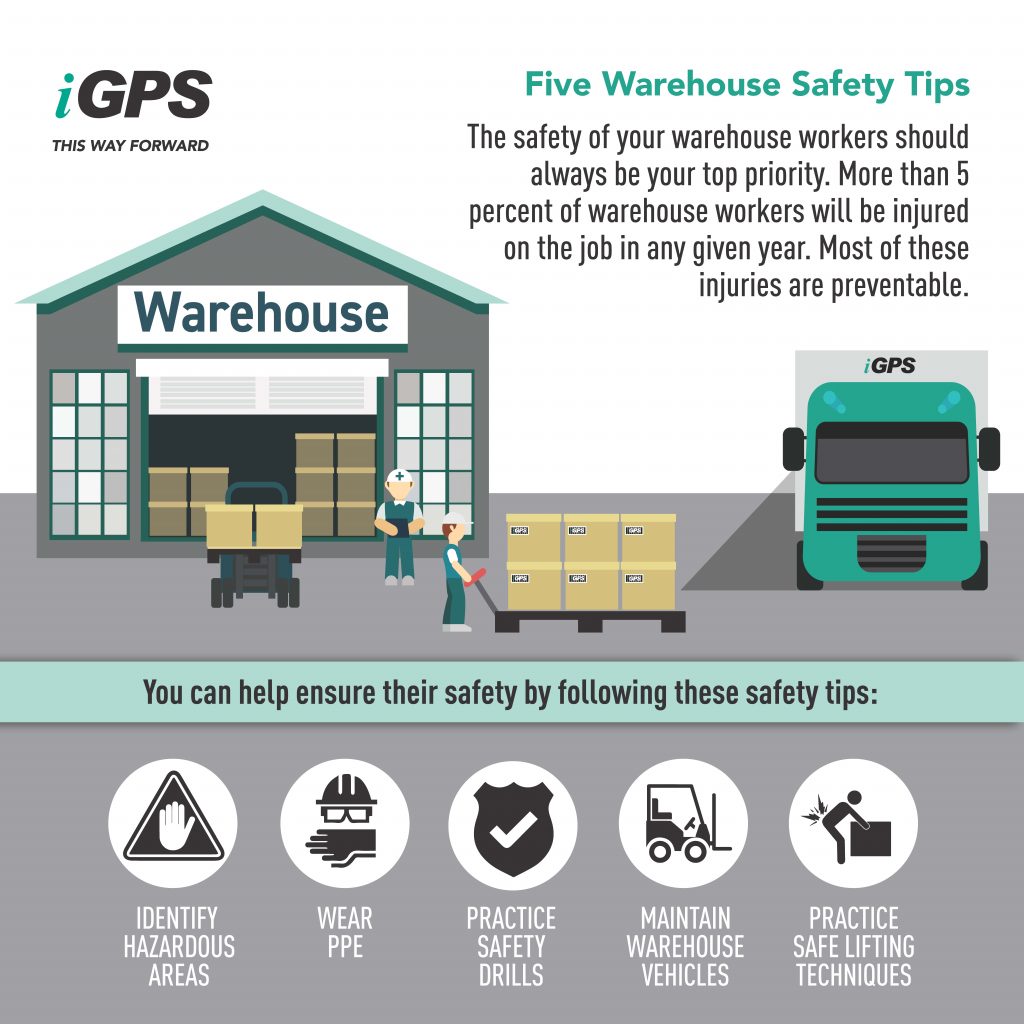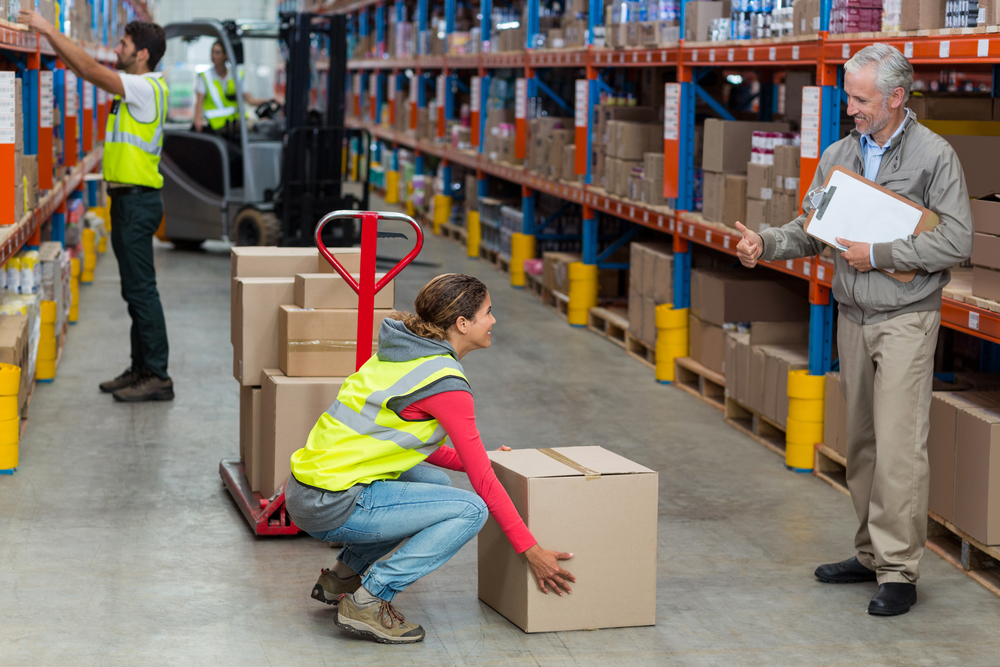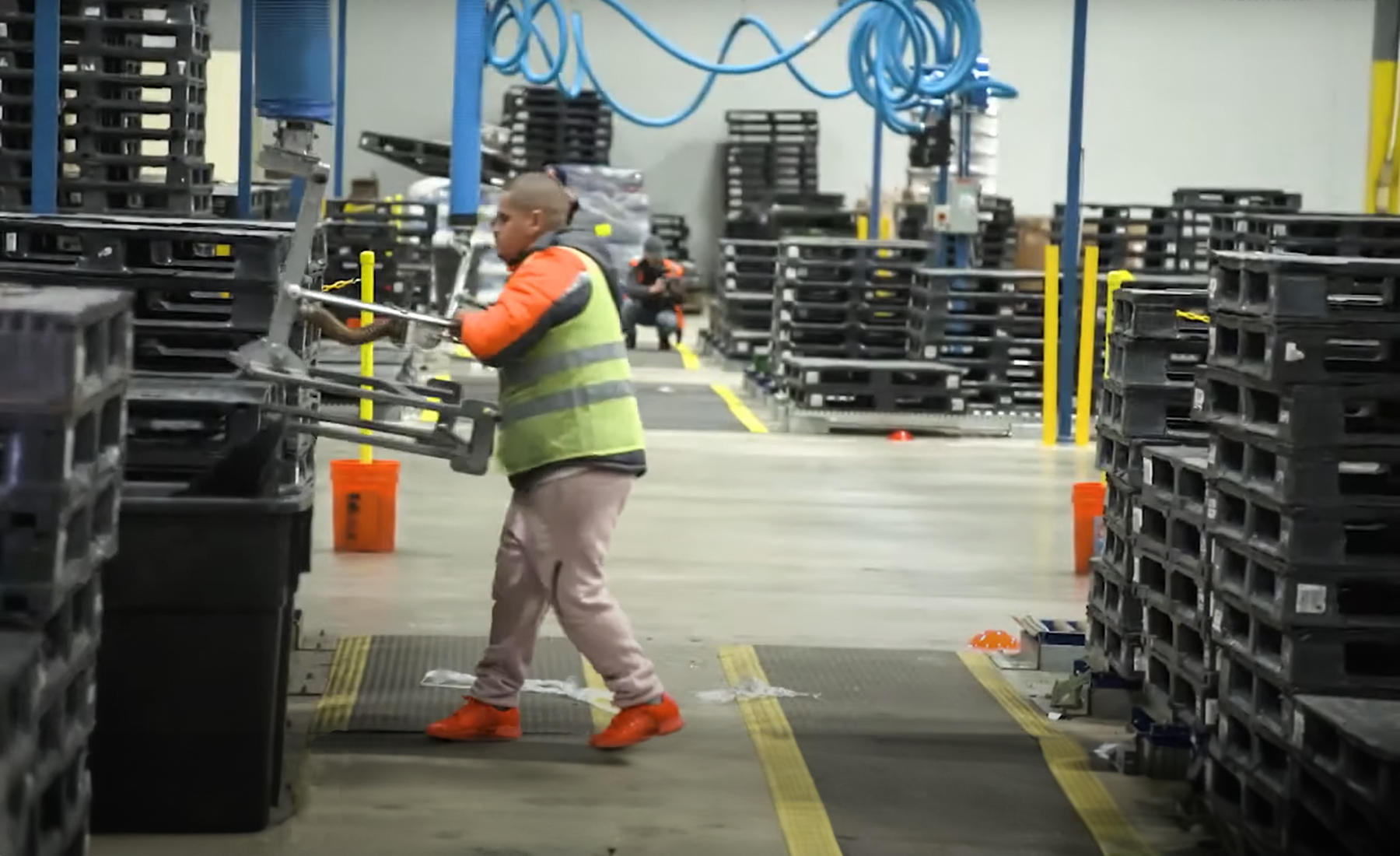Statistics show that around 5 percent of all warehouse workers in the United States will experience injuries on the job each year. These injuries negatively impact not just warehouse workers and their families but the bottom line for businesses. Serious but nonfatal injuries cost the transportation and warehouse industry more than $84 million a week. Tragically, an average of 19 work-related fatalities occur among American warehouse workers each year.
These injuries and deaths result from a wide variety from causes that can include slips and falls, entanglements with machinery, exposure to hazardous materials, improper lifting procedures, and accidents involving warehouse vehicles. As demand for product delivery surges, more warehouses are built, and the global supply chain comes under increasing pressure, it is crucial that companies continue to make the safety of warehouse employees their top priority. Companies operating warehouses can minimize risk to their workers by implementing the following warehouse safety tips.

Identify Hazardous Areas
Clearly visible signs and stickers are some of the most simple and cost-effective ways to ensure the safety of warehouse workers. Caution signs warning of the hazards of equipment or material can help prevent a dangerous workplace situation from even developing. Emergency exits and the safest routes to get to them should also be clearly marked.
Identifying hazardous areas is among those warehouse safety tips that can be implemented in many different ways. Floor markings in the shape of arrows and footprints, for example, can direct foot traffic away from hazardous areas or towards emergency exits should the need arise. Warehouses can invest in floor markings that are colorful and reflective to ensure they can be seen even during power outages.
Wear PPE
Personal protective equipment, or PPE, should include helmets, face shields, eyewear, ear protection, gloves, vests, and kneepads. There should also be an ample supply of first aid kits throughout the warehouse. Warehouse staff should not only have access to PPE but be trained in its proper use and maintenance. The Occupational Health and Safety Administration (OSHA) can provide companies with a comprehensive guide to PPE.
With COVID vaccines now available, an increasing number of pandemic restrictions are being lifted. But indoor face masks may still be required in various jurisdictions. When supplying face masks to warehouse workers companies should remember that warehouse work, unlike office work, can be physically demanding. Masks that interfere with a worker’s vision or have the potential to bring about a heat-induced illness in confined spaces should not be distributed for use.
Practice Safety Drills
Warehouse staff should practice safety drills regularly to confirm that alarms and smoke detectors function properly, that all employees are familiar with emergency exits and the safest routes getting there, and that evacuations plans work in practice. Evacuation plans should include a safe outside assembly point and designated workers to perform key emergency leadership roles.
The most common safety drills involve simulating a warehouse fire, but companies should also prepare themselves for other potential emergencies. A warehouse may be situated in an area where hurricanes and other natural disasters are common. Safety drills can also be designed to help prepare for a serious accident, or even the threat of workplace violence. Maintaining emergency-specific action plans and safety drills is unfortunately one of our workplace and warehouse safety tips that are often ignored.
Maintain Warehouse Vehicles
It goes without saying that warehouse staff should be properly trained on all warehouse vehicles, particularly forklifts. Slips and falls cause the highest number of warehouse injuries, but accidents involving forklifts account for a significant percentage of injuries as well.
Vehicles also need to be properly maintained to ensure worker safety. There are legally mandated vehicle inspections, but warehouse staff should take additional precautions and examine vehicles daily for obvious problems. These include seatbelts and lights that don’t work, and tire damage or a lack of tire pressure. Lack of tire pressure can easily to lead to a forklift overturning, and this type of accident accounts for 25 percent of the 20,000 forklift accidents each year.
Practice Safe Lifting Techniques
Practicing safe lifting techniques is unfortunately another of our workplace and warehouse safety tips that are often ignored. Companies need to ensure their employees are trained properly on safe warehouse lifting techniques. These include lifting with their legs, ensuring they can see over the load they are lifting, minimizing distractions when lifting, and whenever possible, utilizing equipment and vehicles such as carts, pallet jacks, dollies, and forklifts to do the lifting for you.
Lightening warehouse loads can help ensure worker safety. High-quality plastic pallets, for example, are about 35 percent lighter than wood pallets, making them easier and safer for warehouse workers to lift. Unlike wood pallets, they have have no fasteners that can break off and possibly injure employees, and don’t absorb bacteria, chemicals, odors, or other contaminants the way wood pallets do. From a warehouse worker perspective, plastic pallets are a better choice than wood.
With the number of warehouses increasing and supply chains coming under greater pressure, it’s critical that companies do everything they can to keep their warehouse workers safe. By implementing these warehouse safety tips companies can minimize the dangers to their employees and reduce their Total Cost of Business (TCOB).
Companies committed to warehouse safety use iGPS plastic pallets for all their shipping needs. Our lightweight, durable plastic pallets help keep warehouse workers safe and reduce the Total Cost of Business. For more information, contact us at 1-866-557-0047, email a specialist at switch@igps.net, or visit our contact page.



